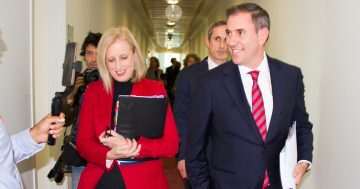
Childcare duties are still mostly carried out by women. Photo: File.
It’s International Women’s Day this week and the country is full of events, from breakfasts to debates, many of them focussed on how women can uplift each other and ensure equality.
We’ve come a long way, as the old Philip Morris cigarette ad (and Fatboy Slim) used to say.
But how much do the struggles and victories of feminists resonate with a younger generation who say they’re gender agnostic, or may define themselves as non-binary or gender fluid?
Young women who have graduated from university and are entering the workforce aren’t looking back at their mothers’ achievements in the third wave of the 60s and 70s – it’s their grandmothers who burned bras, stormed men-only pubs and demanded equal pay for equal labour.
Today the gender discussion has shifted to current battles around recognition and identity.
Fair enough, these issues matter deeply to those who are impacted by them. Everyone has the right to be treated with equality and not diminished by unconscious (or conscious) bias.
But the significant majority of people will enter heterosexual relationships, bear children – and come up hard against some regrettably well entrenched inequalities in the system, most of which are still stacked against women.
Take that persistent problem our grandmothers were agitating against: the gender pay gap.
This week, the Workplace Gender Equality Agency (WGEA) has published base salary and total remuneration median gender pay gaps for private sector employers with 100 or more staff.
The results show that just one third of employers have a median gender pay gap between the target range of -5 per cent and +5 per cent.
Almost two thirds of employers have a pay gap greater than five per cent in favour of men. Across all employers, 50 per cent have a gender pay gap of more than nine per cent.
Here’s another issue: career progression. Workplaces are still, largely, designed around the presumption that men will have an uninterrupted and steady progress.
But women have children and still, in 2024, do the majority of the childcare. Childcare responsibilities are significantly more likely to impact women throughout their careers than men.
Somewhere in the mid to late 30s the early childhood battle begins to settle down as women ascend the leadership ladder. And when they’re around 47 – and for the next eight to 10 years – most of them will begin perimenopause, with a range of symptoms that could include multiple daily hot sweats, heart palpitations, insomnia, intense fatigue, migraines and joint or muscle pain.
If you’re lucky, you’ll also have a stormy adolescent or two in the house and possibly an ageing parent adding to the fun.
Yet the majority of women experiencing these symptoms soldier on because there’s still no expectation you can leave work because you’re struggling with menopause.
It’s still embarrassing, it’s still the butt of jokes, it’s still mysterious (and weird) and somehow not real to anyone who hasn’t been through it. And for many women, it seems like an admission of weakness on which they’ll be judged, despite sometimes intense discomfort.
This is beginning to change: I moderated a discussion this week for the Institute of Public Affairs Administration where a (male) public servant spoke about writing menopause policy for his department (to cheers from the room).
But on this and so many other issues, we are still agonisingly slow to make progress on recognising that career paths predicated on men’s lives can actively hinder women.
When we exclude anyone from full participation in our community, we diminish ourselves. We waste our community’s human capital.
The debate around gender identity matters. So does making sure half the population is paid equally and gets a fair go in the workforce.
Original Article published by Genevieve Jacobs on Riotact.
















